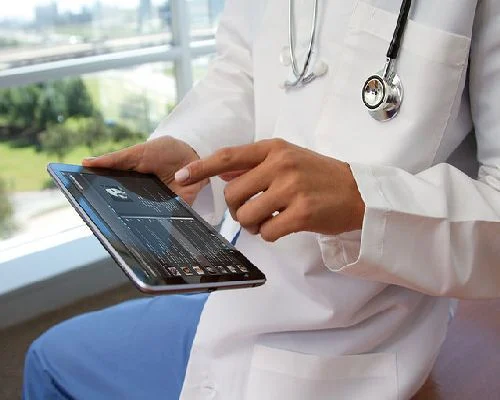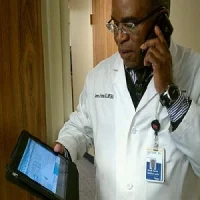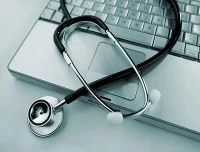The proper collection, management and utilisation of health information play a critical role in modern healthcare. Electronic health records (EHR) serve as the main carrier of medical information, and emerging information technologies — health sensing, big data analysis and cloud computing — provide great potential for facilitating research and improving quality in medical practice.
This study, published in the journal Computers in Industry, aimed to document the current state of research and implementations of the emerging information technologies on creating new means to access and use health information and consequently improving the quality of healthcare.
"The new solutions on health sensing, health data consumption and health service delivery promise to promote practical preventive care by engaging patients or consumers in taking control of wellness and disease prevention by using interactive, patient-oriented technology that works with data from physicians’ EHR systems, say Ji-Jiang Yang, PhD, associate professor of Tsinghua University, Beijing, China, and co-authors.
Emerging Medical Information Technologies
Health Sensing
There has been a sharp incline in the quantity and variety of consumer devices and medical sensors that capture some aspects of physiological, cognitive and physical human health. Examples include a wireless necklace for ECG (electrocardiogram) measurement, cuff-less and wearable Blood Pressure metres, and clip-free eyeglasses-based wearable devices for monitoring heart rate and pulse transit time.
The implementation of these technologies empowers the end-users (e.g., chronic patients) by providing means to monitor and record their health status continually and, if the need arises, seek remote assistance.
Big Data Analysis
With the increasing digitisation of healthcare, a large amount of healthcare data has been accumulated and the size is increasing in an unprecedented rate. Discovering the deep knowledge and values from the big healthcare data is the key to delivering the best evidence-based, patient-centric, and accountable care.
The application of data mining algorithms for medical data analysis and utilisation can be classified into two categories, i.e., unsupervised (descriptive) and supervised (predicative) approaches. The unsupervised methods mainly involve data clustering, i.e., grouping data into clusters by measuring the similarity between objects or EHRs to discover unknown patterns or relationships in the available datasets. The typical unsupervised data mining approaches cover data clustering, association rule mining, and sequence discovery.
Supervised data mining usually builds models based on prior knowledge gained by training on previously annotated data to predict the outcome of desired new data, i.e., the knowledge of historical data are generalised for the prediction of unpredicted/unclassified data. The typical supervised approaches include prediction, classification, and regression.
One of the best practices in healthcare is to use only treatments that are ‘evidence based’. This usually implies that the treatment in question has to be tested for quite some time. However, using big data technologies, it is very much possible to deliver a similar level of evidence in a relatively short period of time if the amount of data is big enough. Hence, the use of big data can have a profound impact on the way new medicines and interventions are implemented in the health field.
Cloud Computing
With healthcare providers looking at solutions to lower their operating costs, emerging technologies such as cloud computing can provide an ideal platform to achieve highly efficient use of computing resources, simplify management, and improve services in a safe and secure manner. Cloud computing can support the analysis of the big data mentioned above.
With the emergence of cloud computing technologies, the connectivity allowed by the internet is exploited to make users have the ability to utilise scalable, distributed computing environments. Although the use of cloud-based data sharing platforms has increased, privacy-related problems have prevented their adoption in the healthcare domain.
Impacts on Healthcare Practice
Enabling local empowerment: The emerging technologies and growing integration are evolving into intelligent and partially autonomous local implementations that support end-user self-reliance and self-determination, while at the same time providing supporting tele-services like tele-monitoring and tele-care. Empowering customers can be done by surrounding them with a supporting social and technical collaborative network.
Boosting preventive care: The emerging technologies promise to promote practical preventive care by engaging patients or consumers in taking control of wellness and disease prevention by using interactive, patient-oriented
technology that works with data from physicians’ EHR systems.
Fostering collaborative healthcare: In the world of collaborative healthcare, diverse medical data sources and services are readily available to patients, care takers and physicians through a network of information systems in a community of clouds. For example, at the point of care, according to the preference of a physician, relevant health data may be retrieved from multiple sources, enabling intelligent decision making of diagnosis and prognosis by invoking complementary services from the healthcare service network.
Image Credit: Flickr
This study, published in the journal Computers in Industry, aimed to document the current state of research and implementations of the emerging information technologies on creating new means to access and use health information and consequently improving the quality of healthcare.
"The new solutions on health sensing, health data consumption and health service delivery promise to promote practical preventive care by engaging patients or consumers in taking control of wellness and disease prevention by using interactive, patient-oriented technology that works with data from physicians’ EHR systems, say Ji-Jiang Yang, PhD, associate professor of Tsinghua University, Beijing, China, and co-authors.
Emerging Medical Information Technologies
Health Sensing
There has been a sharp incline in the quantity and variety of consumer devices and medical sensors that capture some aspects of physiological, cognitive and physical human health. Examples include a wireless necklace for ECG (electrocardiogram) measurement, cuff-less and wearable Blood Pressure metres, and clip-free eyeglasses-based wearable devices for monitoring heart rate and pulse transit time.
The implementation of these technologies empowers the end-users (e.g., chronic patients) by providing means to monitor and record their health status continually and, if the need arises, seek remote assistance.
Big Data Analysis
With the increasing digitisation of healthcare, a large amount of healthcare data has been accumulated and the size is increasing in an unprecedented rate. Discovering the deep knowledge and values from the big healthcare data is the key to delivering the best evidence-based, patient-centric, and accountable care.
The application of data mining algorithms for medical data analysis and utilisation can be classified into two categories, i.e., unsupervised (descriptive) and supervised (predicative) approaches. The unsupervised methods mainly involve data clustering, i.e., grouping data into clusters by measuring the similarity between objects or EHRs to discover unknown patterns or relationships in the available datasets. The typical unsupervised data mining approaches cover data clustering, association rule mining, and sequence discovery.
Supervised data mining usually builds models based on prior knowledge gained by training on previously annotated data to predict the outcome of desired new data, i.e., the knowledge of historical data are generalised for the prediction of unpredicted/unclassified data. The typical supervised approaches include prediction, classification, and regression.
One of the best practices in healthcare is to use only treatments that are ‘evidence based’. This usually implies that the treatment in question has to be tested for quite some time. However, using big data technologies, it is very much possible to deliver a similar level of evidence in a relatively short period of time if the amount of data is big enough. Hence, the use of big data can have a profound impact on the way new medicines and interventions are implemented in the health field.
Cloud Computing
With healthcare providers looking at solutions to lower their operating costs, emerging technologies such as cloud computing can provide an ideal platform to achieve highly efficient use of computing resources, simplify management, and improve services in a safe and secure manner. Cloud computing can support the analysis of the big data mentioned above.
With the emergence of cloud computing technologies, the connectivity allowed by the internet is exploited to make users have the ability to utilise scalable, distributed computing environments. Although the use of cloud-based data sharing platforms has increased, privacy-related problems have prevented their adoption in the healthcare domain.
Impacts on Healthcare Practice
Enabling local empowerment: The emerging technologies and growing integration are evolving into intelligent and partially autonomous local implementations that support end-user self-reliance and self-determination, while at the same time providing supporting tele-services like tele-monitoring and tele-care. Empowering customers can be done by surrounding them with a supporting social and technical collaborative network.
Boosting preventive care: The emerging technologies promise to promote practical preventive care by engaging patients or consumers in taking control of wellness and disease prevention by using interactive, patient-oriented
technology that works with data from physicians’ EHR systems.
Fostering collaborative healthcare: In the world of collaborative healthcare, diverse medical data sources and services are readily available to patients, care takers and physicians through a network of information systems in a community of clouds. For example, at the point of care, according to the preference of a physician, relevant health data may be retrieved from multiple sources, enabling intelligent decision making of diagnosis and prognosis by invoking complementary services from the healthcare service network.
Image Credit: Flickr
References:
Yang JJ, Li J, Mulder J et al. (2015) Emerging information technologies for enhanced healthcare. Computers in Industry,
doi:10.1016/j.compind.2015.01.012
Latest Articles
cloud computing, EHR, big data, data sharing, health sensing, tele-care
The proper collection, management and utilisation of health information play a critical role in modern healthcare. Electronic health records (EHR) serve as...










